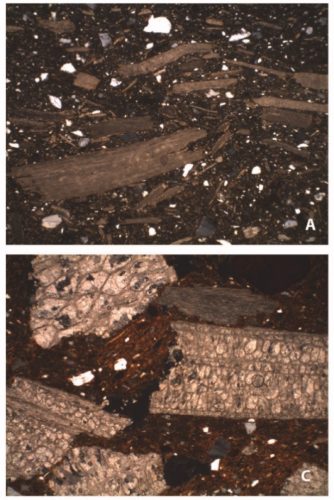
“Archaeologists Don’t Dig Dinosaurs” is a well worn refrain, but occasionally we find that fossils were an important part of the human past. In their new article, Florida Museum graduate student Domenique Sorresso and coauthor Dr. Patrick Quinn (University College, London) analyzed pottery made by the Chickasaw in Mississippi (ca. AD 1200 – 1650). The Chickasaw used both modern and fossil shell to temper their pottery. The fossil shells included extinct oyster from marine environments now fossilized into limestone, while the modern shells were from freshwater mussels that could be found in the nearby rivers.
Archaeologists in the region had long assumed that modern shell temper was abandoned after European contact, and pottery created later in time was exclusively fossil shell tempered. However, Sorresso found that these types were not so clear-cut, with many of her post-contact samples exhibiting both modern and fossil shell. Using petrographic analysis, she identified site-specific paste recipes, as well as common ceramic traditions shared by sites in the region.
Learn more about the cool fossils and pots that contained them: Read Article